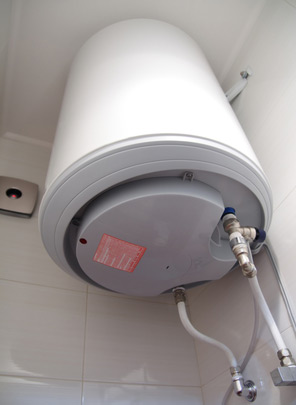How do you feel when it comes to What Kind of Maintenance Do Water Heaters Need??

Hot water is vital for everyday convenience, whether it's for a revitalizing shower or washing meals. To guarantee your hot water system runs effectively and lasts much longer, regular upkeep is vital. This short article supplies sensible tips and insights on how to maintain your home's warm water system to prevent interruptions and expensive repair work.
Introduction
Preserving your home's hot water system may seem complicated, however with a couple of straightforward actions, you can guarantee it runs smoothly for years to find. This guide covers every little thing from understanding your hot water system to DIY upkeep ideas and understanding when to hire expert help.
Relevance of Preserving Your Warm Water System
Normal upkeep not only expands the life-span of your hot water system however additionally ensures it operates successfully. Disregarding maintenance can result in decreased effectiveness, higher power bills, and also early failure of the system.
Signs Your Hot Water System Demands Maintenance
Knowing when your hot water system requires interest can protect against major problems. Keep an eye out for signs such as irregular water temperature, odd sounds from the heater, or rusty water.
Comprehending Your Warm Water System
Before diving into maintenance tasks, it's handy to understand the fundamental parts of your warm water system. Generally, this includes the hot water heater itself, pipelines, anode poles, and temperature controls.
Monthly Maintenance Tasks
Regular regular monthly checks can help catch minor problems prior to they rise.
Purging the Water Heater
Flushing your water heater removes sediment accumulation, enhancing performance and lengthening its life.
Monitoring and Changing Anode Rods
Anode poles stop deterioration inside the container. Evaluating and changing them when worn is critical.
Evaluating and Readjusting Temperature Level Setups
Changing the temperature level setups makes sure ideal performance and safety.
DIY Tips for Maintenance
You can perform numerous upkeep jobs on your own to maintain your warm water system in top condition.
Looking for Leakages
Consistently evaluate pipelines and links for leakages, as these can lead to water damage and higher expenses.
Checking Stress Alleviation Valves
Examining the pressure safety valve guarantees it works appropriately and protects against extreme stress build-up.
Shielding Pipelines
Shielding warm water pipelines lowers warmth loss and can conserve power.
When to Call a Specialist
While do it yourself upkeep is beneficial, some issues require professional proficiency.
Facility Concerns Calling For Specialist Aid
Instances consist of major leaks, electrical problems, or if your water heater is consistently underperforming.
Regular Expert Maintenance Advantages
Specialist maintenance can include complete assessments, tune-ups, and guaranteeing compliance with safety standards.
Conclusion
Regular upkeep of your home's warm water system is important for efficiency, longevity, and expense savings. By complying with these suggestions and understanding when to seek professional help, you can guarantee a reputable supply of hot water without unanticipated disturbances.
How to Maintain an Instant Hot Water Heater
Before tinkering with your hot water heater, make sure that it’s not powered on. You also have to turn off the main circuit breaker and shut off the main gas line to prevent accidents. Also turn off the water valves connected to your unit to prevent water from flowing into and out of the appliance. 2. When you’re done, you have to detach the purge valves’ caps. These look like the letter “T†and are situated on either side of the water valves. Doing so will release any pressure that has accumulated inside the valves while at the same time avoid hot water from shooting out and burning your skin. 3. When the purge valves’ caps are removed, you have to connect your hosing lines to the valves. Your unit should have come with three hoses but if it didn’t, you can purchase these things from any hardware or home repair shops. You can also get them from retail stores that sell water heating systems. Read the user’s manual and follow it to complete this task properly. When the hosing lines are connected, open the purge port’s valves. 4. You should never use harsh chemical cleaners or solutions when cleaning your unit. Make use of white vinegar instead. It should be undiluted and you’ll probably use about 2 gallons. 5. Now flush your water heater. This task should probably take about 40 minutes. We can’t give you specific directions for this because the procedure is carried out depending on the type, model and brand of your heater. With that being said, refer to the user’s manual. 6. When you’re done draining the unit, you have to turn off the purge port valves again. Remove the hosing lines that you earlier installed on each of the water valves. Put the valve caps (purge port) back in their respective places and be very careful so as not to damage the rubber discs that are found inside these caps. 7. Now that everything’s back in place, check your user’s manual again to find out how to reactivate your water heating system. 8. Once it is working, turn one of your hot water faucets on just to let air pass through the heater’s water supply pipes. Leave the tap on until water flows smoothly out of it. https://www.orrplumbing.com/blog/2014/september/how-to-maintain-an-instant-hot-water-heater/

We were shown that editorial about Tips on Maintaining a Water Heater from an acquaintance on our other web page. For those who appreciated our page plz make sure you remember to share it. Thanks a bunch for your time. Please stop by our site back soon.
Make An Appointment